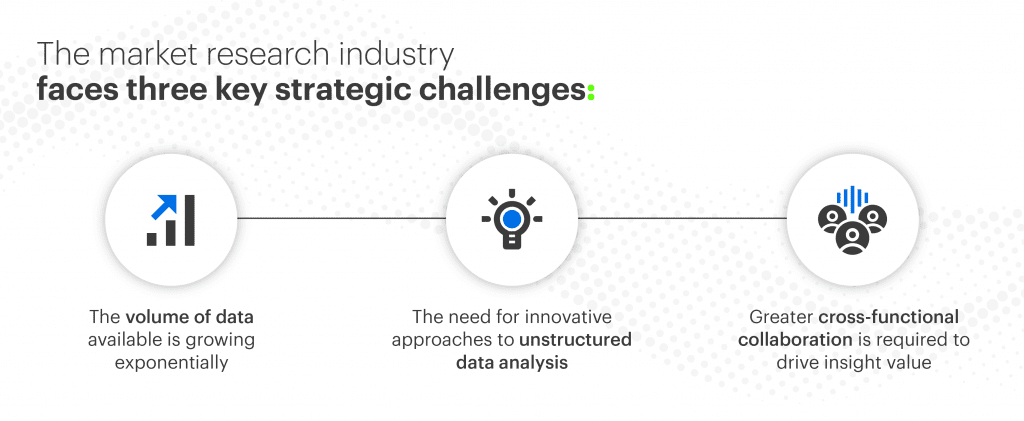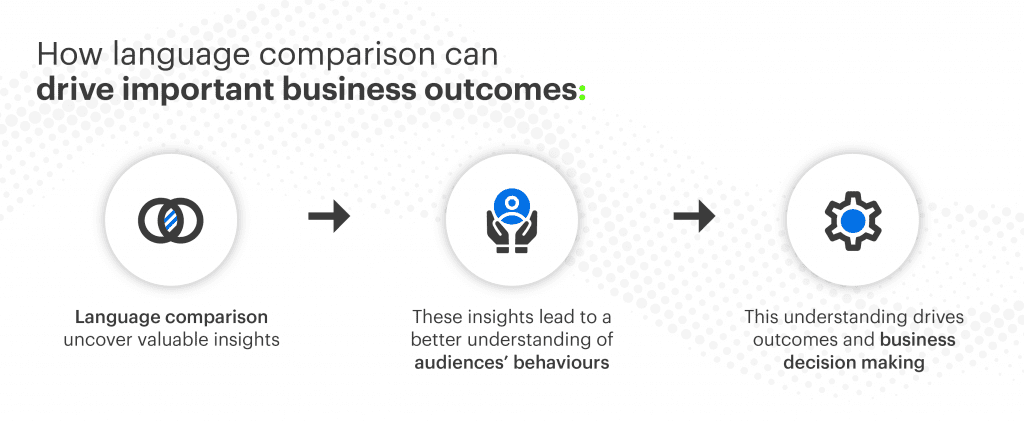Why text data is our focus

Let me start by asking you a question: When making data-driven strategic business decisions, what data sources must you typically rely on?
Revenue, churn rate, traffic numbers or NPS score perhaps? Whenever I ask this question, the answer almost always lies in these kinds of quantitative measures, which help you piece together what is happening in a digestible, easy-to-understand way.
But the trouble is, this data fails to incorporate why and how these things happen – which in my opinion enables you to formulate the best business strategy.
By contrast, qualitative text data can reveal the drivers of consumer behavior and brand success. Qualitative data contains insights that tell you why consumers act the way they do, from deciphering buying decisions to understanding how customer loyalty is cultivated. For this reason, I believe that qualitative data represents the future of business intelligence and Relative Insight has been built on this mission.
Relative Insight aims to change the way business leaders answer my previous question to absolutely and unequivocally include qualitative data. We want to help businesses realize the unrivaled value that lies within text data, providing them with a scalable way to discover transformative insights and consider text data as a strategic asset. Because that is the power of text analysis.
The challenge
In the pursuit of better business intelligence, I’ve found that businesses and the wider market research industry face three key strategic challenges:
- The volume of data available is growing exponentially
- There is a need for innovative approaches to unstructured data analysis
- Greater cross-functional collaboration is required to drive insight value


The growing volume of data
Data creation is estimated to grow to more than 180 zettabytes by 2025. To put that into perspective, one zettabyte is equivalent to one trillion gigabytes. In other words, that’s an enormous amount of data.
It’s predicted that as much as 90% of this data is unstructured, which presents its own unique business challenges. The sheer volume of unstructured data proves daunting to both manage and analyze, therefore many companies decide that they must disregard it. But there is clearly a huge opportunity for businesses to strategically utilize this resource.
A need for innovative approaches to analysis
In the 2021 GRIT Report: Business & Innovation, the top unmet needs of buyers were disclosed as: faster time to insight, easier implementation and innovative approaches.
Businesses are guilty of overlooking qualitative data because of the perceived difficulty of systematically analyzing text – which is partly down to a lack of innovative technologies.
Greater cross-functional collaboration
On top of this, there is a demand for cross-functional data collaboration. In many organizations, data is siloed to single departments meaning that the full potential of insights isn’t recognized across a business.
Gartner predicted that “through 2022, only 20% of analytic insights will deliver business outcomes.” This suggests that there is a huge chasm between insight generation and tangible business value. Through collaboration, business leaders and department experts can bridge the divide between insights and action, leading to business intelligence that makes an impact.


Our solution
Relative Insight provides companies with an advanced software for analysing text data at scale across three main functions: Marketing, Customer Experience and Talent.
How do we do this? Through a unique comparative approach to text analytics that surfaces the differences and similarities between language sets. We’ve found that language in isolation tells us what’s really interesting, but it’s the differences that we should all start to care about.
Comparison provides an efficient and scalable way to unlock the full business potential of unstructured text data. By comparing the language used across various demographics, time periods, brands or customer segments, businesses can understand what really matters.
Comparative analysis uncovers thought-provoking trends and valuable insights that enable our clients to better understand their audiences’ behaviors, which can inform business decision-making and ultimately drive outcomes.
The Relative difference
Language is important. But words simply aren’t as precise as numbers.
Unlike other qualitative analysis providers or text categorization tools, Relative Insight takes a big data-style approach to text analysis, delivering rigor to unstructured data.
The platform analyses qualitative data at scale through advanced natural language processing and manifests the analysis as a metric. You can then effectively drill down, visualize and report on your qualitative data. By bringing quantitative structure to qualitative analysis, our technology pinpoints the language insights that actually matter.
In doing so, we take the subjectivity out of qualitative analysis. We transform the way businesses view text data, enabling the creation of rich insights that can be used confidently to inform strategic decision-making.
